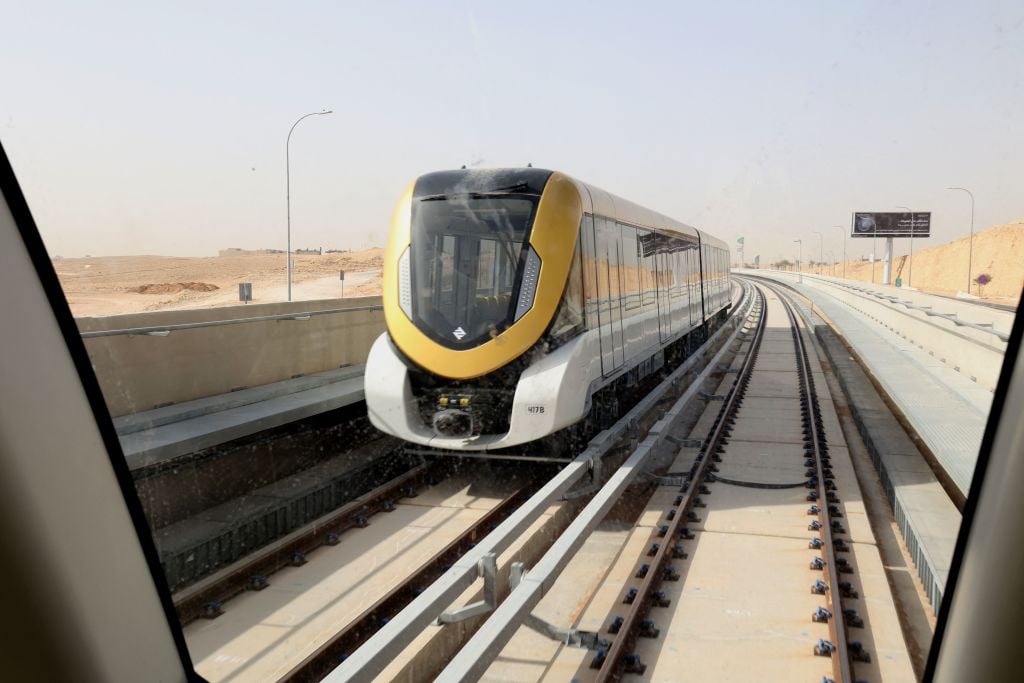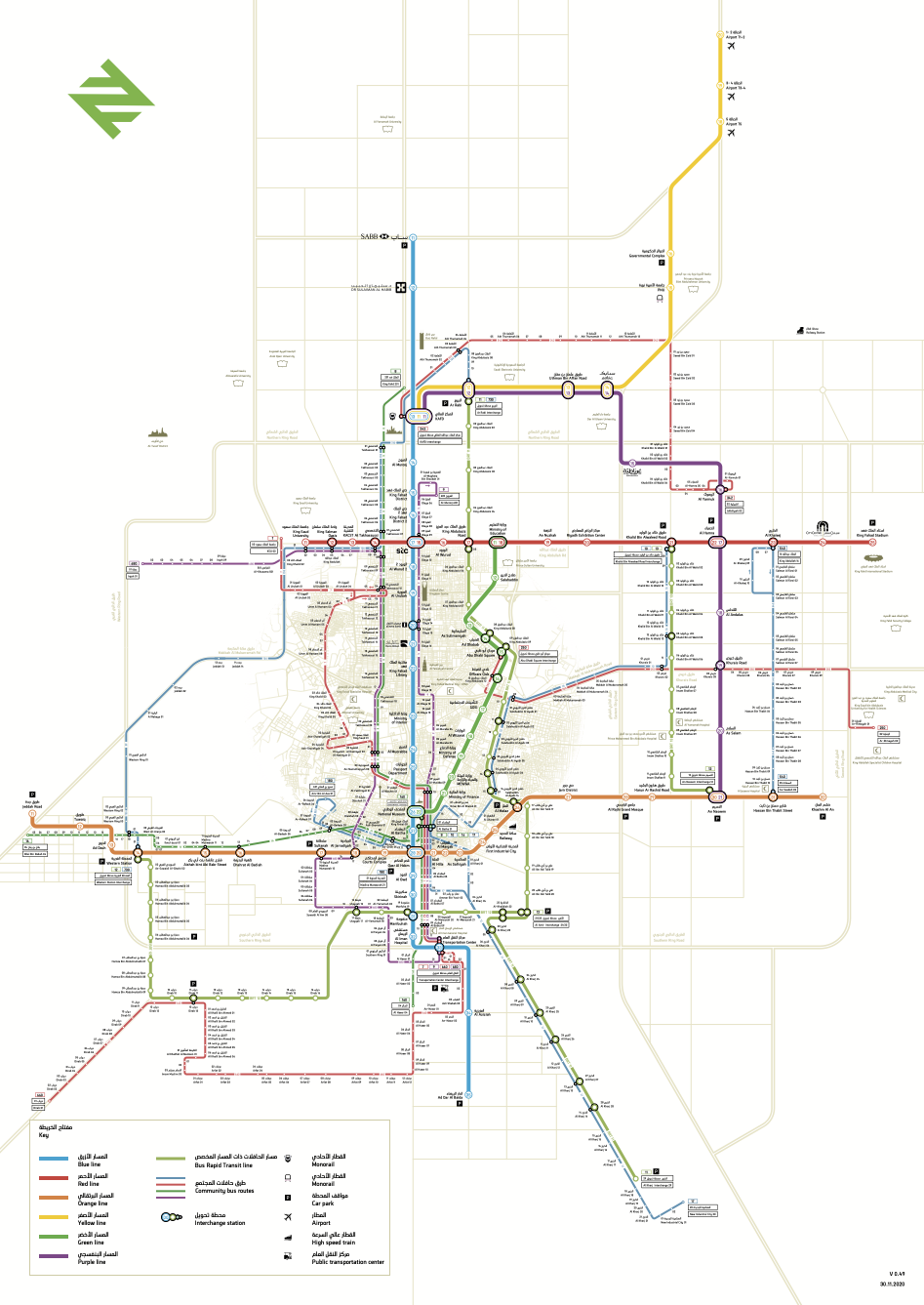
On November 27, 2024, Riyadh will witness a significant milestone with the inauguration of the first phase of its metro system.
This initial launch will see three of the six planned lines become operational, connecting key areas such as Al Orouba to Batha, King Khalid International Airport Road, and the intersection of Abdulrahman Bin Auf Street and Sheikh Hassan Bin Hussein Street.
The remaining lines are slated to commence service by mid-December. As the world’s longest driverless metro system, the Riyadh Metro is poised to transform urban mobility in the Saudi capital, offering a sustainable and efficient alternative to car travel.
READ MORE: Riyadh Metro to kick off first phase on Nov 27, includes 3 lines
Here are 5 key things that you need to know about Riyadh Metro and the expected benefit it will bring to Saudi Arabia’s biggest city.
1 Stimulate economic growth and improve traffic flow
When the initial construction of the Riyadh Metro began in 2014, the population was around 6 million. Today, it’s around 7.8 million and is expected to surpass 9 million by 2035. To support this growth, the Riyadh Metro is spread across 84 metro stations with six lines with a 176 km total length. The network will be connected to King Abdullah Financial District, King Khalid International Airport, downtown Riyadh, and the main universities. In its first phase, it will be capable of transporting 1.2 million passengers daily with a capacity of potentially 3.6M passengers.
2 Comfort and safety
The Riyadh metro stations will provide passengers comfort and safety, including air-conditioning, internet access, and passenger information systems. According to the Royal Commission for Riyadh City (RCRC), the four main stations include Qasr Al-Hukm District Station, King Abdullah Financial District (KAFD) Metro Station, Western Metro Station, and STC Station.

3 Setting new standards for sustainability
The Riyadh Metro Project will help reduce carbon emissions, fostering a healthier environment for all. The integration of renewable green materials and energy sources is reflected in the installation of 5448 m2 of photovoltaic panels in West Depot (Line 3) to power 33 per cent of the facility’s energy needs. According to the RCRC, both the Qasr Al-Hukm District Station and the Western Metro Station align with international benchmarks for green building with reduced water consumption and major energy savings.
4 Bus network linking key areas
Together capable of serving 1.7 million passengers daily during the initial operation phase, the Riyadh Metro project links a connecting bus service to densely populated areas. It also links transport hubs, universities, government buildings, commercial centres, and hospitals. According to the RCRC, the bus network will be served by 842 buses across 80 routes and 2,860 stops with a capacity for 500,000 passengers once fully launched. Also, 160 km of dedicated bus lanes serving high-capacity corridors will be provided by three Bus Rapid Transit (BRT) routes.
5 The metro lines
Riyadh Metro’s six lines include: the Blue Line which is 38 km along Al-Olaya – Al-Batha – Al-Hayer roads; the Red Line which follows King Abdullah Road across 25.3 km; the Orange Line spanning 40.7 km along Al-Madinah Al-Munawarah Road – Prince Saad Bin Abdurrahman I Road. Also, the Yellow Line connects King Khalid International Airport Road, spanning 29.6 km; the Green Line extends 12.9 km along King Abdulaziz Road; and the Violet Line which runs 30 km along Abdurrahman Bin Awf Road – Sheikh Hassan Bin Hussain Bin Ali Road.


